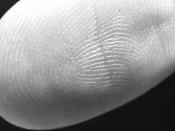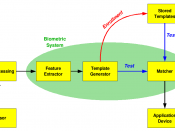There was a time, not even too long ago when the word "biometrics" baffled people. Now it is defining the future security of our most precious things. Government and big business have been excited for such technology to arrive, and they are going to feel safer knowing the unique benefits of having biometrics secure their locations. In a world run by money, biometrics of course comes with an equally expensive price tag, but research proves it is money well spent. Biometrics has three main security systems that can be installed including hand readers, fingerprint readers and impressive iris/retina scanners.
Hand readers are now considered the most primitive of all the new biometric technologies. Organizations began using hand scanners because they were relatively easy to install and unique for granting access into private places. The way a hand reader worked was by measuring the landscape of one's hand. No two hands were expected to be alike, and so the hand reader recorded the dimensions of it's many visitors deciphering which ones were allowed access.
The adaptation of the hand reader later became the fingerprint reader. This seemed like a natural modification since science taught us humans have unique fingerprints that can never be duplicated. This system seemed to hold up, and still does, as we may expect to see it used in as identification purposes in the near future. The only problem for this system it when clever intruders invent prosthetics that are able to fool the computer. There is also the rare case of twins having similar fingerprints and so even though the chances are rare, fingerprint readers can be fooled.
Eye scanners surpass all other means of biometric security because they are the most accurate at capturing identification features in the iris and retina of the eye. For scanning...


